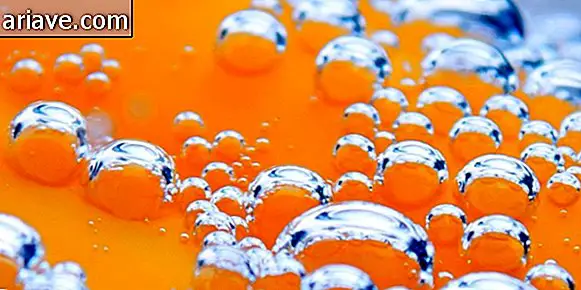5 ingenious defense mechanisms that exist in nature
Have you ever heard of a nervous beetle that shoots super hot jets down the ass when it feels threatened? What about the tobacco-eating caterpillar that uses its toxic breath to scare off predators? Who knows about the fish that releases goo that can choke anyone who tries to devour it? Or the prawn, capable of producing water jets up to 100 km / h and up to 4, 700 ° C when in danger?
Because these animals are just some of the ones we talked about here at Mega Curioso and that found ways beyond singular to scare off their predators. However, there are many other creatures in nature that have developed ingenious defense mechanisms, and we have selected five examples - from an article by Jaymi Heimbuch from the Mother Nature Network portal - for you to check out. Look:
1 - The lizard that expels blood through the eyes

The lizard in the image - of the species Phrynosoma cornutum -, besides having horns, has developed a defense mechanism beyond unusual. This reptile, no larger than 60 centimeters in length, is capable of throwing blood through the eyes to chase away its predators. You do not believe? So watch the lizard in action:
P. cornutum has two muscles that protect the major blood vessels that feed your eyes. When the defense mechanism is “triggered”, these muscles contract by breaking the vessels and splashing the blood against the predator. In addition to this unexpected jet scare the animal, the blood contains substances that help repel attackers.
2 - The Wolverine Salamander

Salamanders aren't particularly scary animals - take a look at the picture above and tell us if these pets are scary? However, the Pleurodeles waltl species (same as the ones in the photo) have a very aggressive defense mechanism: when they feel threatened, they see Wolverine! Well, more or less ...
These amphibians are able to project their pointed ribs out of the body, and the worst is that they still produce a poisonous substance that is released by the skin. And this, in combination with the “thorns, ” forms an efficient weapon that, while painful, can even be deadly to some predators.
3 - The Ant Bomb

As with bees, ants also play different roles in their colonies, and when the security of the group is threatened, the animals unite to attack the invaders. However, Camponotus saundersi ants go further than just using their jaws to chase away predators. They turn into suicidal warriors and explode.
The workers of this ant species have glands that extend the length of their bodies and are filled with a sticky substance that, besides being toxic, has corrosive properties. When C. saundersi feel threatened, they contract their abdominal muscles to basically explode their bodies and cover the predators with their poison, thus protecting the colony. Heroic defense mechanism, don't you think?
4 - The millipede that shines in the dark

Some animals, as you know, take advantage of their lush coloring and eye-catching designs to scare off predators. However, this trick is not very useful for creatures of exclusively nocturnal habits, as is the case with Motyxia millipedes. And that's why they use bioluminescence as a defense mechanism - and a pinch of cyanide, to be sure.
Because these arthropods only come out at night, when a predator approaches, they begin to glow and expel cyanide - and other toxic substances that make them rather unappetizing - through pores that are scattered along the sides of their bodies.
5 - The sea cucumber that ... Evacuates your guts?

Everyone has their strategy to scare off predators, doesn't it? So while some weep tears of blood, turn into thorny creatures, commit suicide, or perform in the dark, there are those who expel their internal organs to frighten - or amaze! - enemies such as sea cucumbers. See (from the minute 1:36):
Although it seems that the sea cucumber in the video above is "defecating" the gut, in fact it is employing a mechanism called evisceration in which it expels its internal organs through the anus to defend itself. It turns out that their viscera are toxic and - more than properly - have filamentous shape, so their predators can die if they get caught in this tangle. Ingenious, don't you think?











